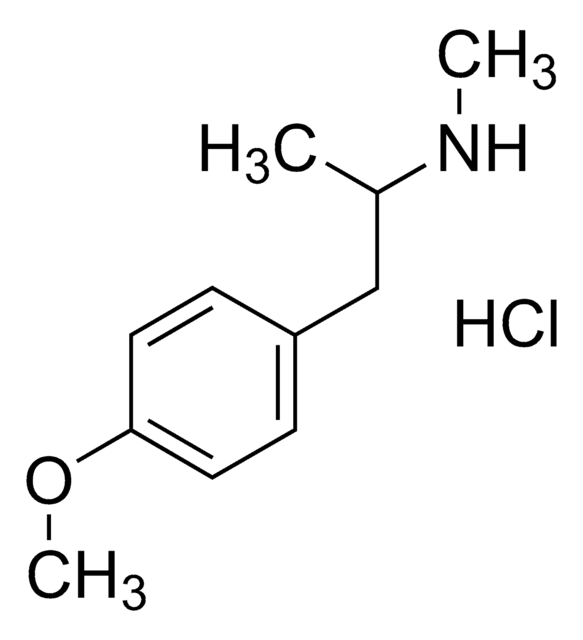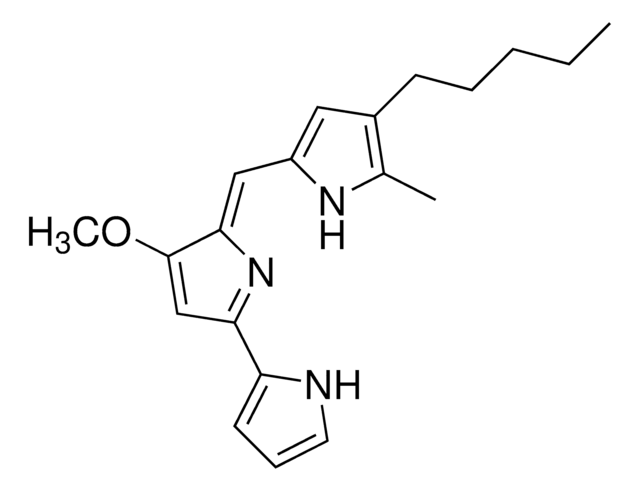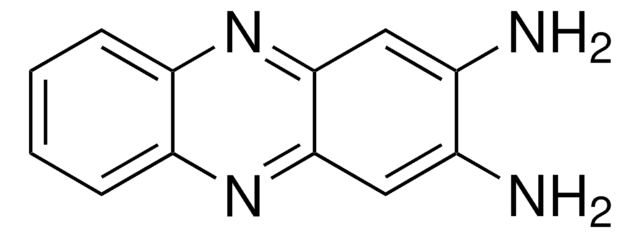P0046
Pyocyanin
from Pseudomonas aeruginosa, ≥98% (HPLC), solid, redox-active phenazine
Synonyme(s) :
5-Methyl-1(5H)-phenazinone, Pyocyanine, Sanasin, Sanazin
About This Item
Produits recommandés
product name
Pyocyanin, from Pseudomonas aeruginosa, ≥98% (HPLC)
Source biologique
Pseudomonas aeruginosa
Niveau de qualité
Pureté
≥98% (HPLC)
Forme
solid
Solubilité
DMSO: soluble
acetone: soluble
chloroform: soluble
ethanol: soluble
Conditions d'expédition
wet ice
Température de stockage
−20°C
Chaîne SMILES
CN1c2ccccc2N=C3C(=O)C=CC=C13
InChI
1S/C13H10N2O/c1-15-10-6-3-2-5-9(10)14-13-11(15)7-4-8-12(13)16/h2-8H,1H3
Clé InChI
YNCMLFHHXWETLD-UHFFFAOYSA-N
Application
Actions biochimiques/physiologiques
Notes préparatoires
Mention d'avertissement
Warning
Mentions de danger
Conseils de prudence
Classification des risques
Acute Tox. 4 Oral - Eye Irrit. 2
Code de la classe de stockage
11 - Combustible Solids
Classe de danger pour l'eau (WGK)
WGK 1
Point d'éclair (°F)
Not applicable
Point d'éclair (°C)
Not applicable
Certificats d'analyse (COA)
Recherchez un Certificats d'analyse (COA) en saisissant le numéro de lot du produit. Les numéros de lot figurent sur l'étiquette du produit après les mots "Lot" ou "Batch".
Déjà en possession de ce produit ?
Retrouvez la documentation relative aux produits que vous avez récemment achetés dans la Bibliothèque de documents.
Les clients ont également consulté
Contenu apparenté
We offer agonists, antagonists, modulators and other bioactive small molecules for immune system signaling target identification and validation, as well as a variety of antibiotics, antivirals, and antifungals.
Notre équipe de scientifiques dispose d'une expérience dans tous les secteurs de la recherche, notamment en sciences de la vie, science des matériaux, synthèse chimique, chromatographie, analyse et dans de nombreux autres domaines..
Contacter notre Service technique














